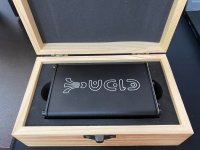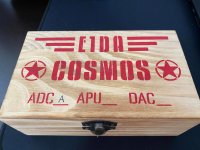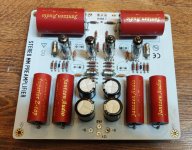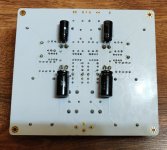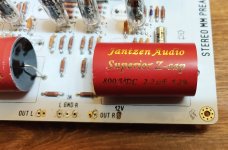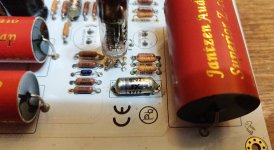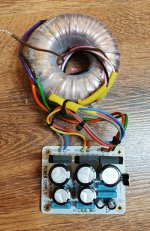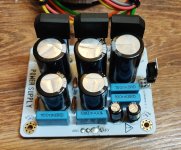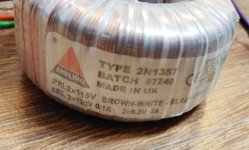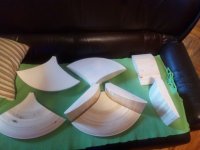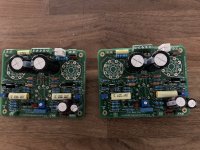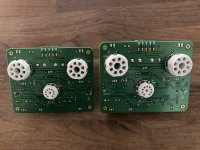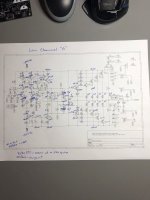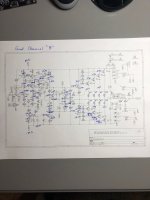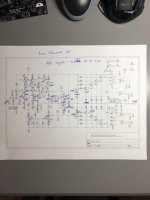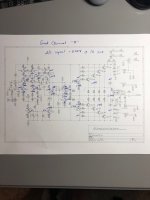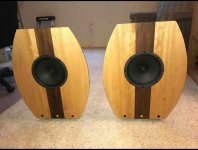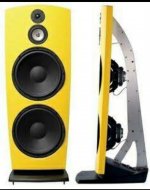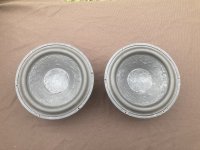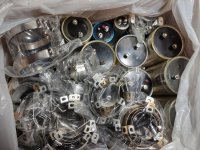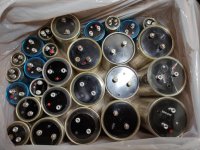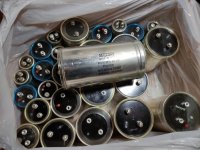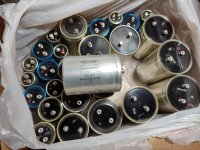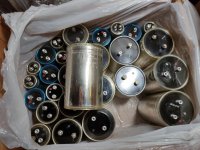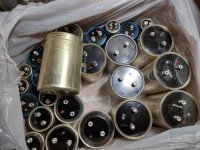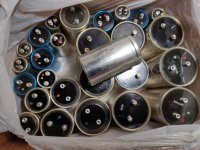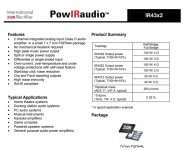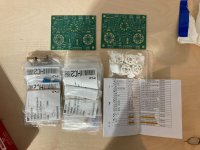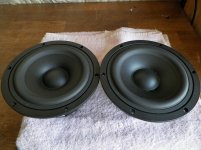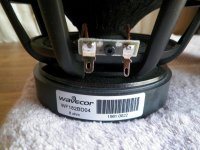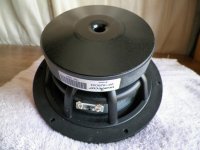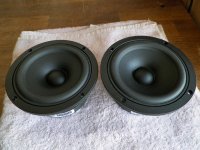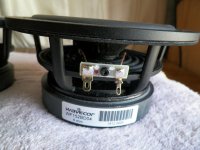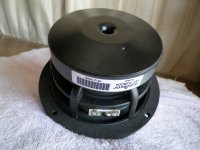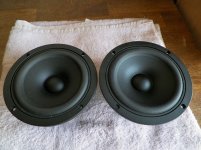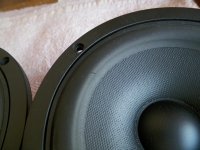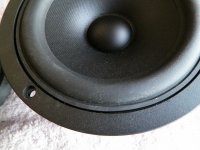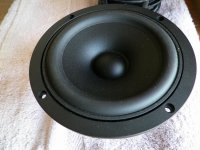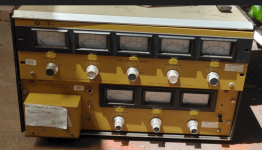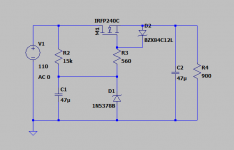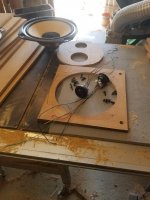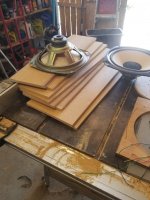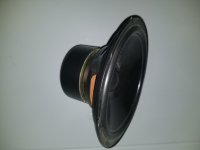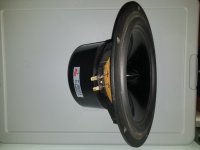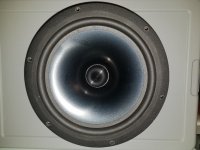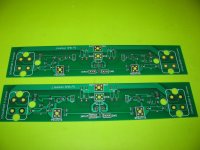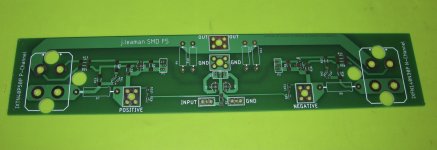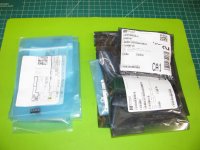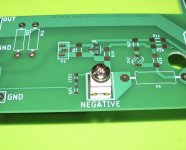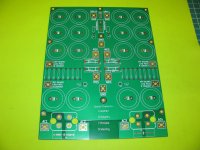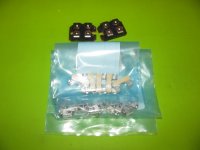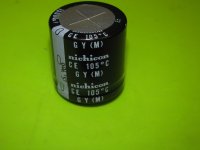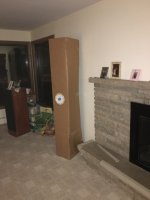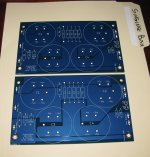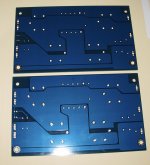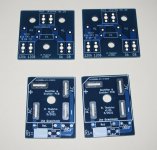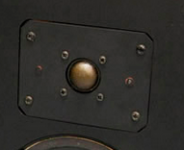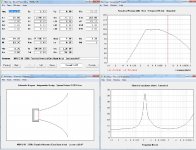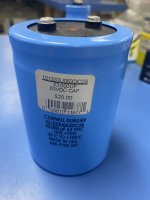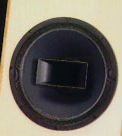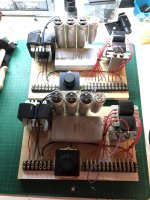How to stretch mylar and heat treatment!
- By esl 63
- Planars & Exotics
- 28 Replies
Hi!
I started to refurbish QUAD ESL63 panels around 1999 and around 2001 it went more serious, a separate workshop was rented together with a friend.
Hostaphan of different thickness in big rolls was purchased and we developed a "perfect coating"... the coating lasted for approx 10 years, so it was not perfect after all. The Hostaphan film stayed stretched!
A lot of testing was done in a not so scientific way, also heat treatment was done with heat gun. But everything can be done slightly better so thats the background of the information in this tread.
This tread is about the properties of polyester film, BO-PET, and you will see that it is not that simple as you may think.
The film has different properties and tensile strength in X and Y direction.
And this is important if you want to stretch the membrane really hard since it will relax slightly over time....
A good stretched membrane will stay almost straight when there is no signal:

Too much relaxation means that the film will stick to one side and almost touch the stator:

And when the membrane is too relaxed you can get arcing and hiss noise, arcing is producing ozone, and ozone will make the film brittle and it will tear apart and get "rotten". The glue holding the membrane will also decompose or degrade in contact with ozone.
To measure the performance we need to do some testing of the tensile strength and the elongation.
When you apply tensile force to the film it will start to break at the weakest point which usually is where you fixate the film.... Over 20 pieces was tested and 6 of them "worked" by breaking somewhere close to the middle.
Some tape helps out a little bit.

Clamping force is crucial.. and many tests has to be done before you get one that breaks where you want it.
I have a MOV movie but could not download it here of the actual "happening" when it breaks...
So here is some snippings..


Some milliseconds before it breaks..

And finally it gives up.
The test jig is moving 50mm/minute and the force is monitored continuously.
There is a difference between X (width) and Y (length) direction but more sample has to be tested with carefully mounting to get better data.
It is also extremely important how you cut the test pieces. Even a small scratch on the surface introduces a force concentration and it will break long before it´s real maximum.
Here is a table with some more or less successful measurements. Test is performed at 21deg C.

Nr 2, 3, Is in the longest direction, the winding direction of the roll so to say.
Nr 4, 10, 11, and 12 is in the shortest direction, side to side. The spread of data is as you can see to big to draw any conclusions for now.
Wider pieces will be tested to reduce the influence of irregularities from cutting the film.
Here is a graph:

And on 6 samples we can theoretically do a calculation, even though we know that there was some issues when the sample was prepared.
The orange and green curve has a different slope compared to the others, that we can see clearly.

This is a good beginning. Or what do you think?
Next step is to measure the influence of heat, you know about the "heat gun" stretch and the "baking" of the film in an oven as we have seen QUAD is doing.
I do not find it but if you know you can post the reference further down, Thank you!
A little teaser for next experiment before bed time...


With this test jigg you can adjust the chamber temperature (chamber is not attached in this picture, but you get the point.
Same force diagram is plotted as previous, but here you can adjust temperature within +/- 0,2 deg C. Good enough.
After stretching at a certain force, you heat up the chamber/membrane to a certain very specific temperature where the polyester molecules actually starts to tensioning the diagram even harder! I will explain the physics later on.
And if you exceed this temperature point it will relax instead and then if you heat it even more it will break.... game over.
We need to characterize this better than the attempt above, and also better than the stretch jig i developed >20 years ago, and actually is still working very good by the way!
If you want to make a good long lasting electrostatic speaker, maybe you can learn something here.
I started to refurbish QUAD ESL63 panels around 1999 and around 2001 it went more serious, a separate workshop was rented together with a friend.
Hostaphan of different thickness in big rolls was purchased and we developed a "perfect coating"... the coating lasted for approx 10 years, so it was not perfect after all. The Hostaphan film stayed stretched!
A lot of testing was done in a not so scientific way, also heat treatment was done with heat gun. But everything can be done slightly better so thats the background of the information in this tread.
This tread is about the properties of polyester film, BO-PET, and you will see that it is not that simple as you may think.
The film has different properties and tensile strength in X and Y direction.
And this is important if you want to stretch the membrane really hard since it will relax slightly over time....
A good stretched membrane will stay almost straight when there is no signal:
Too much relaxation means that the film will stick to one side and almost touch the stator:
And when the membrane is too relaxed you can get arcing and hiss noise, arcing is producing ozone, and ozone will make the film brittle and it will tear apart and get "rotten". The glue holding the membrane will also decompose or degrade in contact with ozone.
To measure the performance we need to do some testing of the tensile strength and the elongation.
When you apply tensile force to the film it will start to break at the weakest point which usually is where you fixate the film.... Over 20 pieces was tested and 6 of them "worked" by breaking somewhere close to the middle.
Some tape helps out a little bit.
Clamping force is crucial.. and many tests has to be done before you get one that breaks where you want it.
I have a MOV movie but could not download it here of the actual "happening" when it breaks...
So here is some snippings..
Some milliseconds before it breaks..
And finally it gives up.
The test jig is moving 50mm/minute and the force is monitored continuously.
There is a difference between X (width) and Y (length) direction but more sample has to be tested with carefully mounting to get better data.
It is also extremely important how you cut the test pieces. Even a small scratch on the surface introduces a force concentration and it will break long before it´s real maximum.
Here is a table with some more or less successful measurements. Test is performed at 21deg C.
Nr 2, 3, Is in the longest direction, the winding direction of the roll so to say.
Nr 4, 10, 11, and 12 is in the shortest direction, side to side. The spread of data is as you can see to big to draw any conclusions for now.
Wider pieces will be tested to reduce the influence of irregularities from cutting the film.
Here is a graph:
And on 6 samples we can theoretically do a calculation, even though we know that there was some issues when the sample was prepared.
The orange and green curve has a different slope compared to the others, that we can see clearly.
This is a good beginning. Or what do you think?
Next step is to measure the influence of heat, you know about the "heat gun" stretch and the "baking" of the film in an oven as we have seen QUAD is doing.
I do not find it but if you know you can post the reference further down, Thank you!
A little teaser for next experiment before bed time...
With this test jigg you can adjust the chamber temperature (chamber is not attached in this picture, but you get the point.
Same force diagram is plotted as previous, but here you can adjust temperature within +/- 0,2 deg C. Good enough.
After stretching at a certain force, you heat up the chamber/membrane to a certain very specific temperature where the polyester molecules actually starts to tensioning the diagram even harder! I will explain the physics later on.
And if you exceed this temperature point it will relax instead and then if you heat it even more it will break.... game over.
We need to characterize this better than the attempt above, and also better than the stretch jig i developed >20 years ago, and actually is still working very good by the way!
If you want to make a good long lasting electrostatic speaker, maybe you can learn something here.

